Butt workout: 15 exercises for a stronger booty
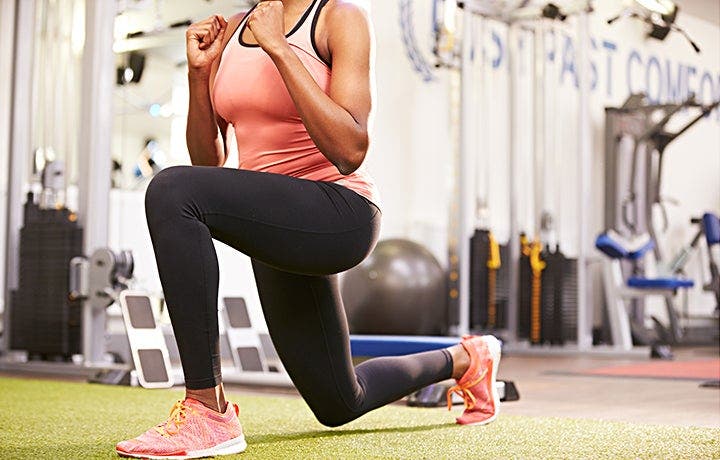
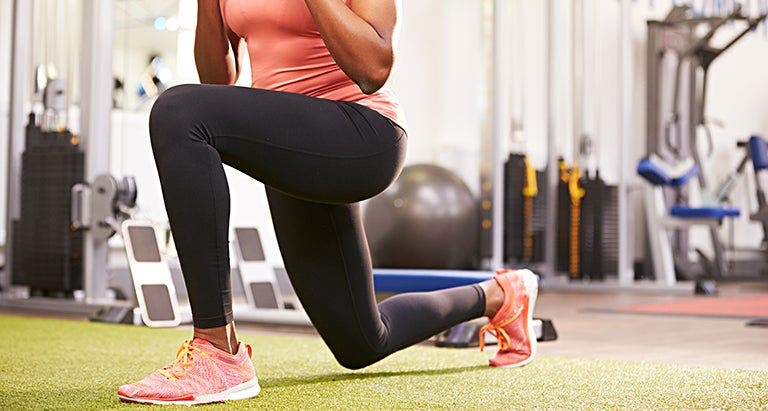
Whether you describe your butt as saggy, flat, or full, butt workouts can help you sculpt and strengthen your glutes, i.e., the group of three muscles that make up your booty:
- Gluteus maximus: The largest muscle in the butt, the gluteus maximus is largely responsible for the shape of your butt. More importantly, it facilitates hip mobility to help you stand up from a chair or walk up a hill and supports the pelvis to keep you upright.
- Gluteus medius: Located beneath the gluteus maximus, this thick muscle is primarily responsible for hip extension and rotation.
- Gluteus minimus: Positioned below the gluteus medius, this muscle works to stabilize the thigh bone in its socket.
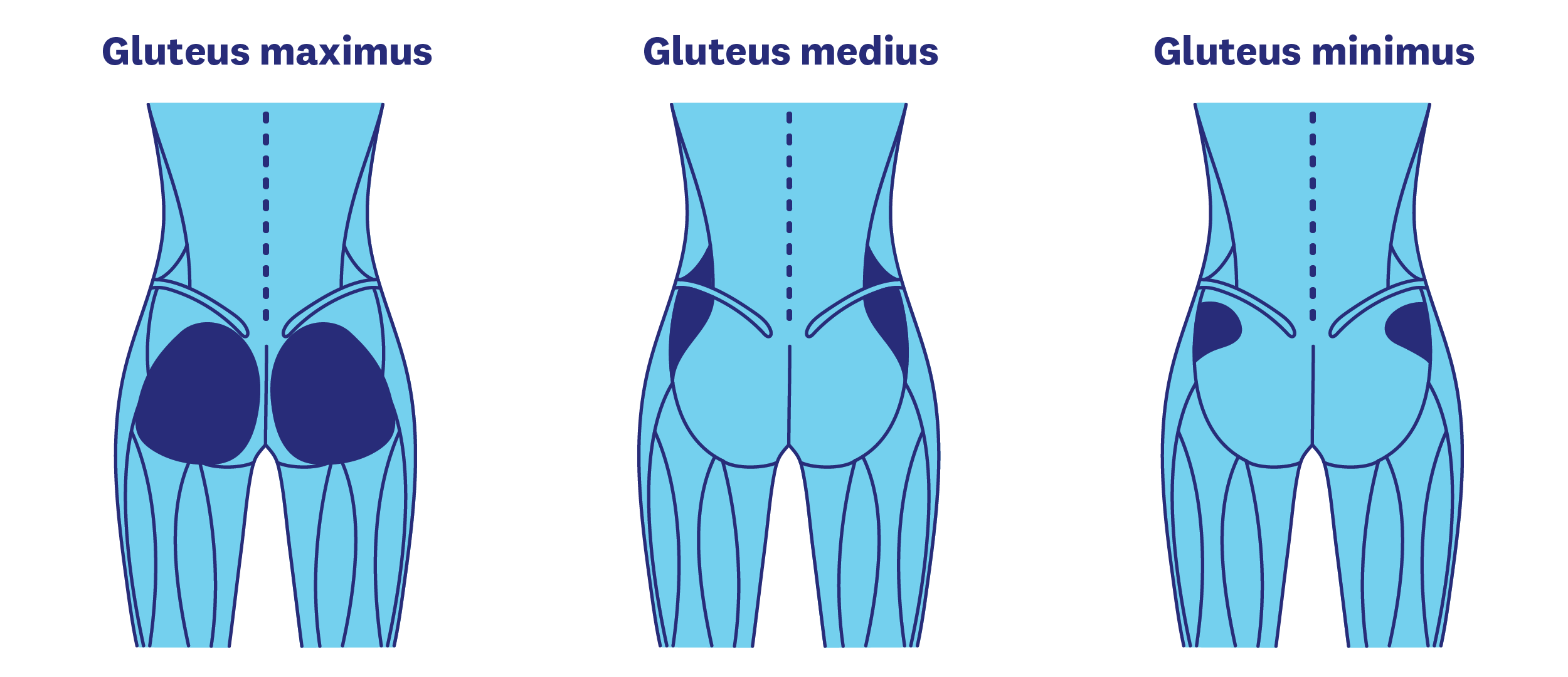 Beyond—or rather, beneath—the glutes, are your hamstrings, the muscle group that runs down the back of your thighs. Strong hamstrings help enhance the distinction between the back of the legs and the butt to create a “lifted” look, says celebrity trainer Gunnar Peterson, CSCS. Because different movements activate different muscles that comprise and surround the butt, it’s important to incorporate a variety of exercises into your routine.
Beyond—or rather, beneath—the glutes, are your hamstrings, the muscle group that runs down the back of your thighs. Strong hamstrings help enhance the distinction between the back of the legs and the butt to create a “lifted” look, says celebrity trainer Gunnar Peterson, CSCS. Because different movements activate different muscles that comprise and surround the butt, it’s important to incorporate a variety of exercises into your routine.
Ready to build your booty? To see results, devote at least two days a week to a focused glute circuit like the one below, Peterson says. On the other days, focus on cardio, core work, and strength-training different areas of the body to help keep your fitness regime balanced.
And if you’re totally new to working out? Pick just one or two of the exercises listed below to practice a few times a week. Gradually increase your reps and sets (i.e., on a weekly basis) as you get more comfortable with the moves—and stronger.
10 butt exercises you can do at home
There are countless ways to activate your glutes and legs without any equipment, says Pat Gilles, CSCS and owner of Pat’s Gym in Madison, WI. (Note: While you can begin practicing the following exercises as soon as, well, now, it’s always a good idea to talk to your doctor before starting any new kind of exercise routine.)
1. Donkey kicks
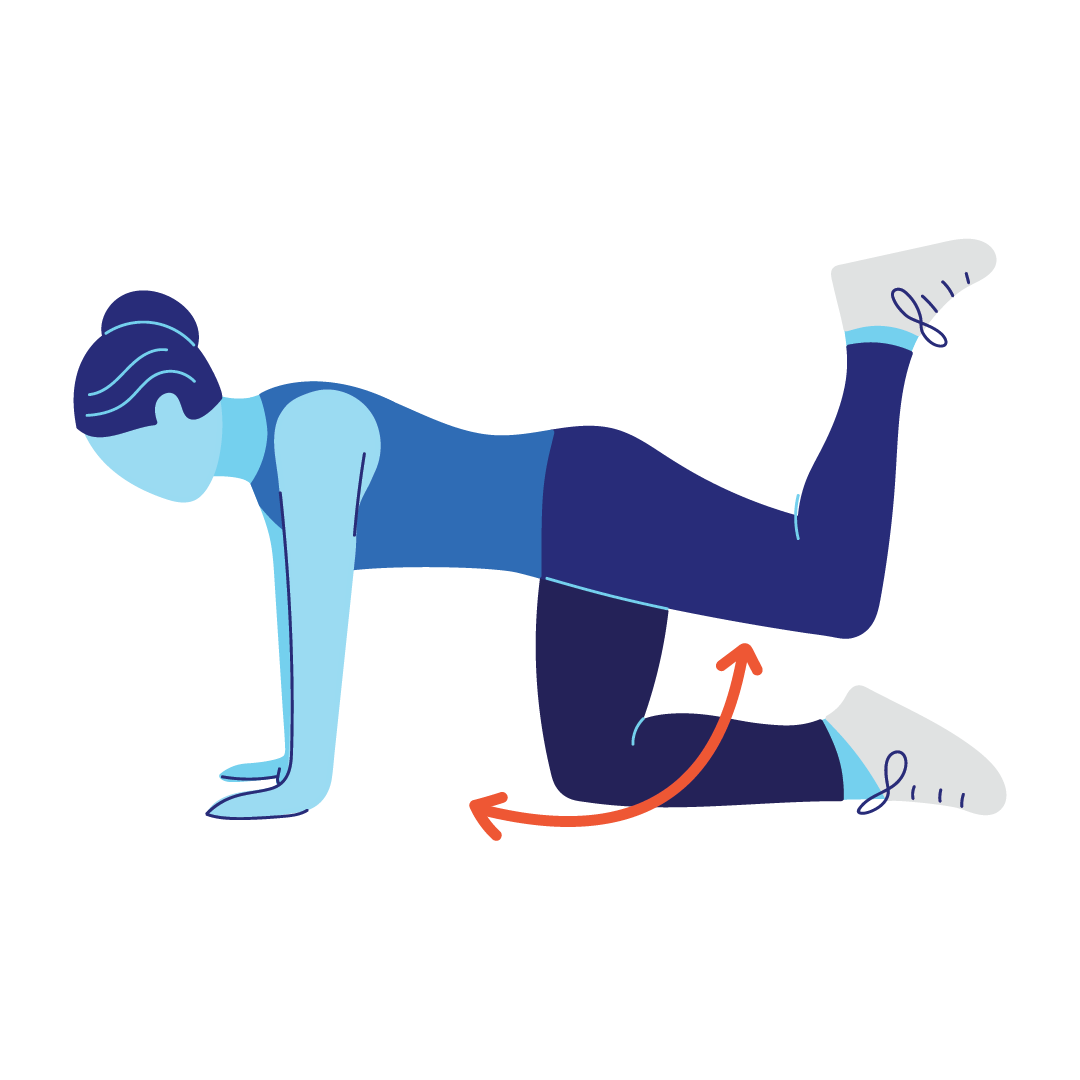 Perform this move correctly, and you’ll feel the burn in both your gluteus maximus and core.
Perform this move correctly, and you’ll feel the burn in both your gluteus maximus and core.
How to do it: Kneel on your hands and knees with your wrists under your shoulders and your knees beneath your hips. Keeping your tummy tight, spine neutral (not arched), and knees bent 90-degrees, engage your glutes as you raise one heel behind you and toward the ceiling until your thigh is almost parallel to the floor. Return to your starting position with control to complete one rep. Repeat 15 to 20 times, then switch sides. Start with two sets per side and build up to three or four.
2. Bridge
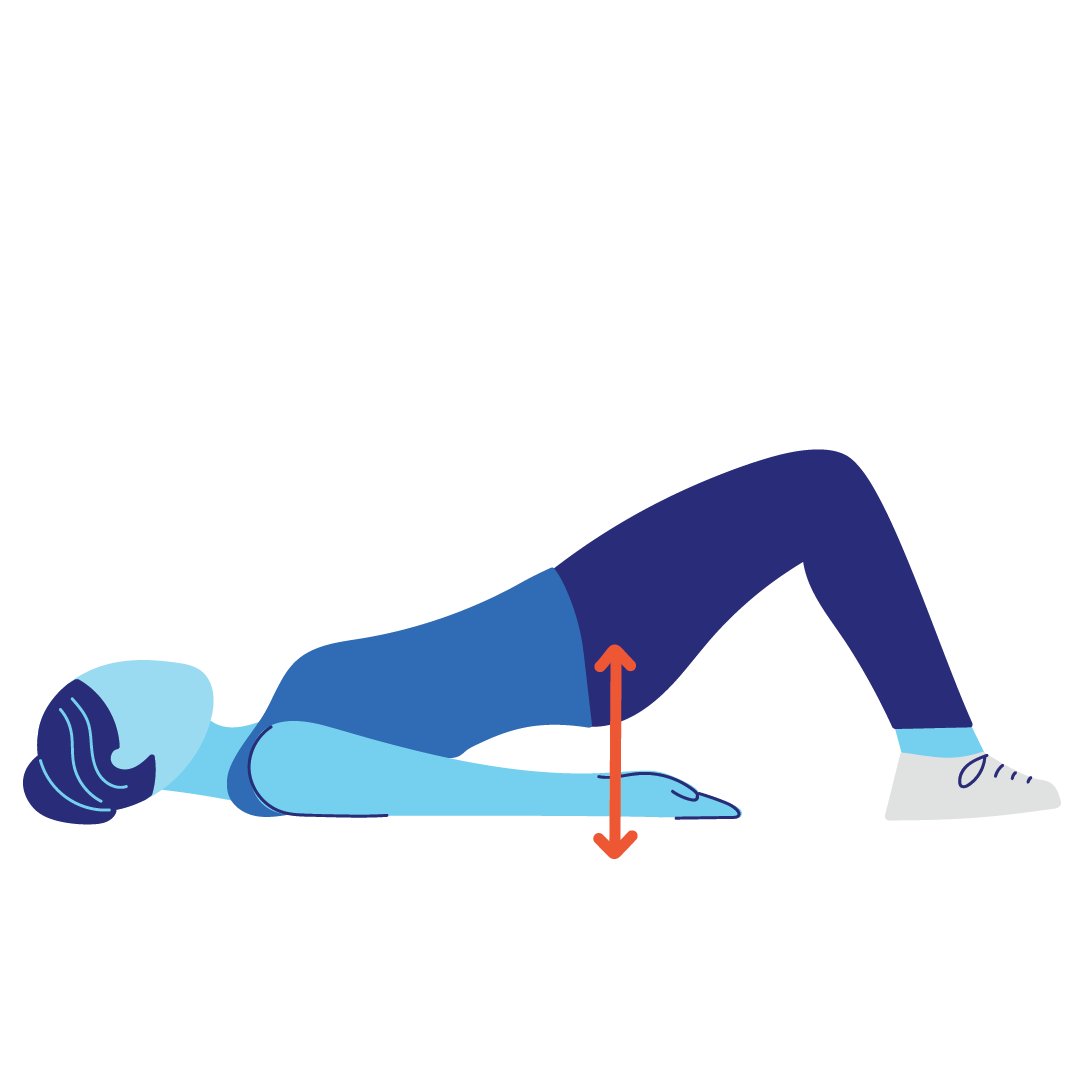 Bridges help build strength in the muscles around the hip joint and improve the stability of the torso. They’re one of the most impactful exercises on glute development, Gilles says.
Bridges help build strength in the muscles around the hip joint and improve the stability of the torso. They’re one of the most impactful exercises on glute development, Gilles says.
How to do it: Lie on your back with your knees bent and feet flat on the floor, hips-width apart. Squeeze your butt to lift your hips toward the ceiling until your body forms a straight line between your knees and shoulders. Then return to your starting position with control to complete one rep. Do two to three sets of five to eight reps.
3. Elevated bridge
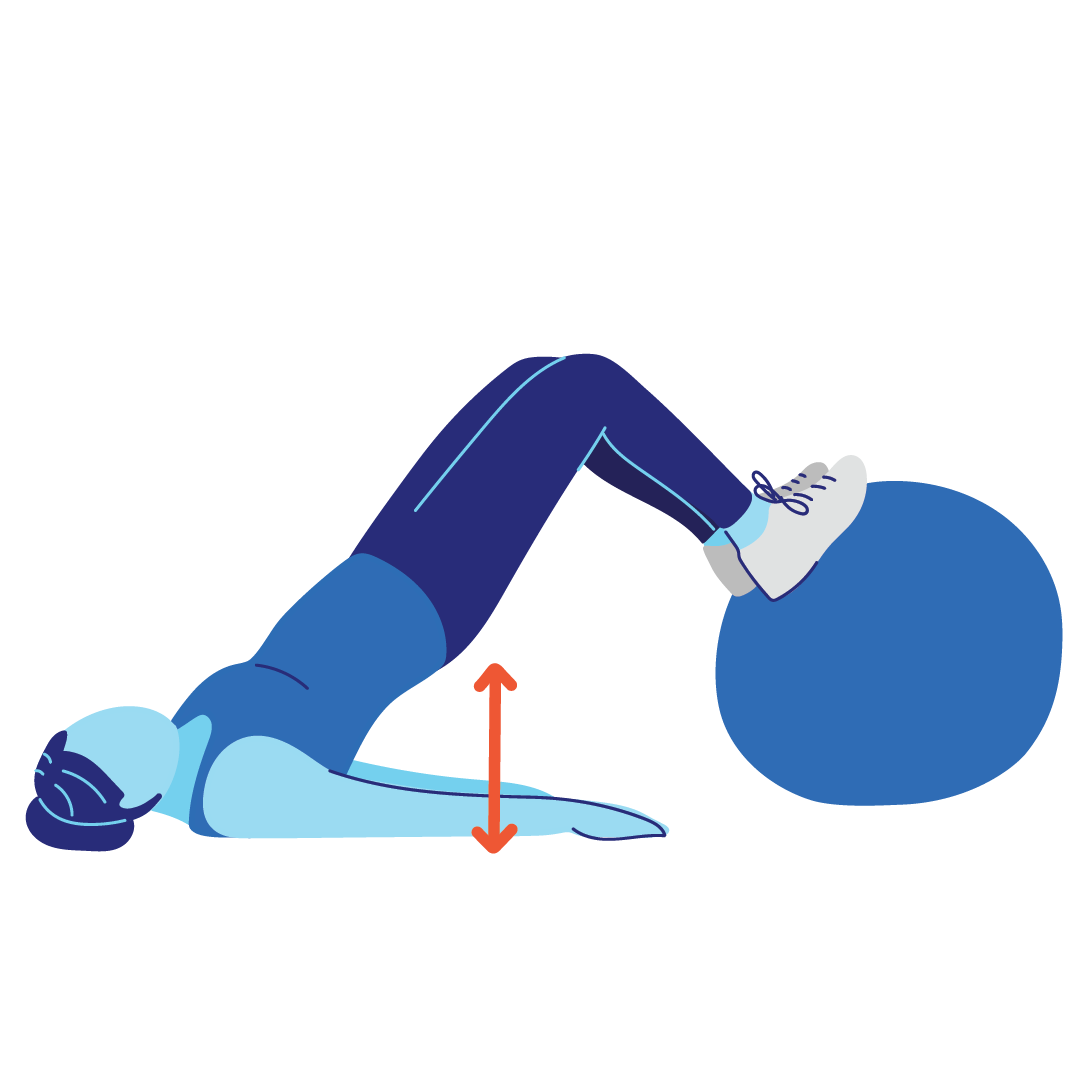 Placing your feet on an elevated surface while performing a bridge increases your range of motion, activates your hip flexors and stretches your glutes at the same time, Gilles says.
Placing your feet on an elevated surface while performing a bridge increases your range of motion, activates your hip flexors and stretches your glutes at the same time, Gilles says.
How to do it: Lie on your back and place your heels hips-width apart on a firm, elevated surface such as a steady chair or coffee table. Squeeze your butt and drive through your heels to lift your hips toward the ceiling until your body forms a straight line between your knees and shoulders. Then return to your starting position with control to complete one rep. Perform two to three sets of five to ten reps.
4. Fire hydrant
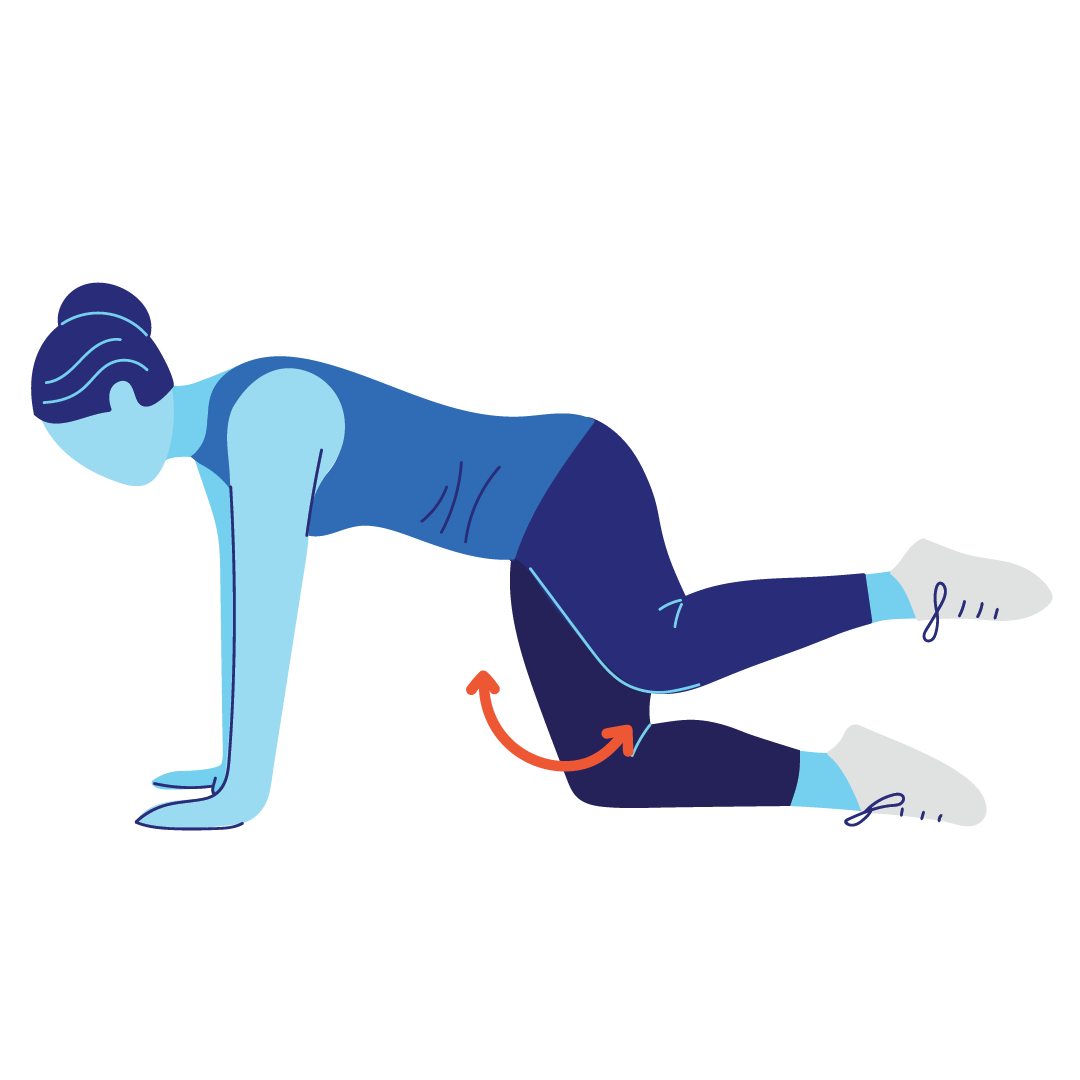 Fire hydrants work your hip abductors and your gluteus medius specifically, Peterson says, adding that the moves can contribute to the overall “roundness” of the booty.
Fire hydrants work your hip abductors and your gluteus medius specifically, Peterson says, adding that the moves can contribute to the overall “roundness” of the booty.
How to do it: Start on your hands and knees, with your wrists beneath your shoulders. Make sure your back is neutral, and your abdominal muscles are engaged. Keeping your right knee bent at 90 degrees, lift it out to the side until you reach hips height. Return to your starting position to complete one rep. Perform two to three sets of 10 to 12 reps per leg.
5. Reverse lunge
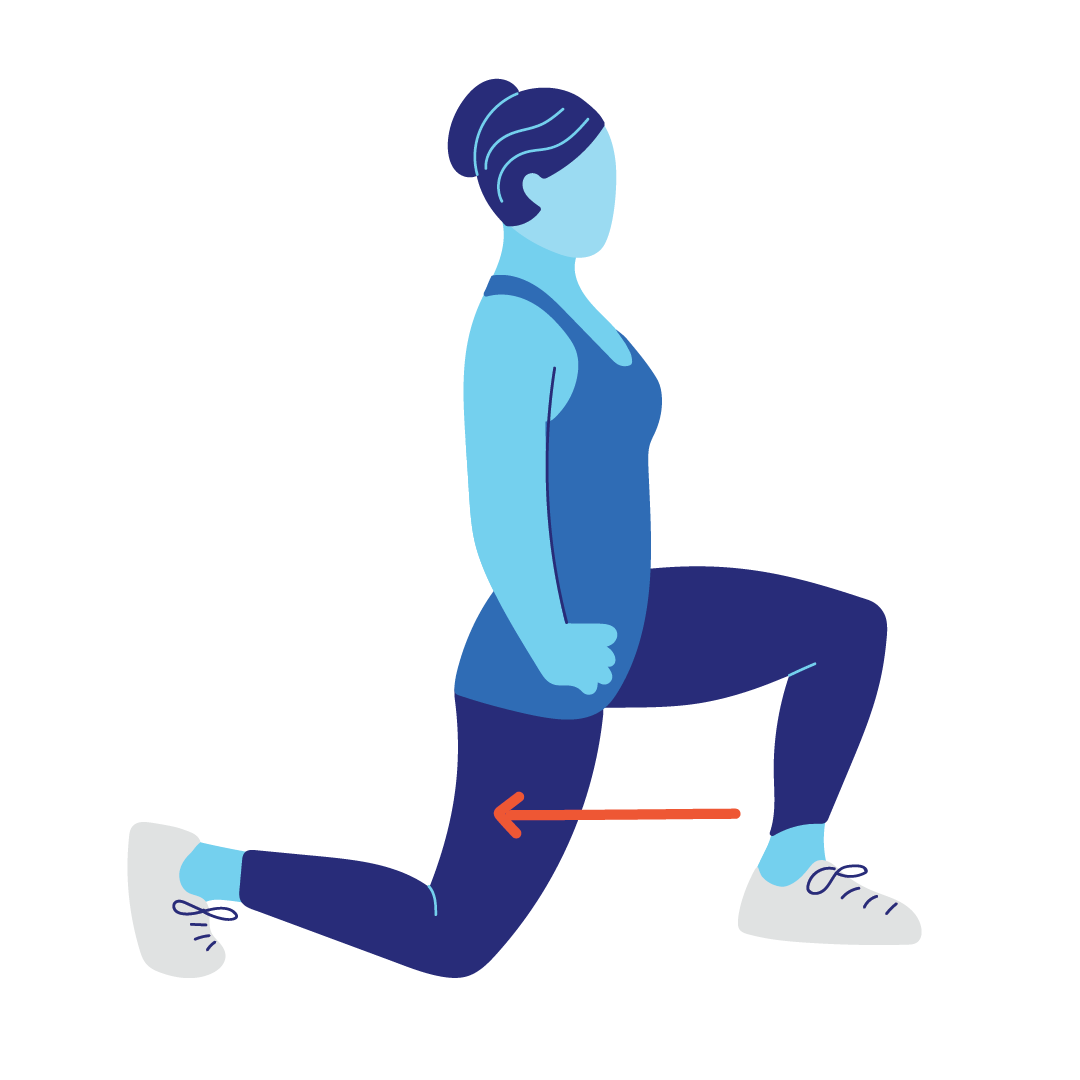 A reverse lunge works your glutes and hamstrings both when you lower yourself to the ground and push yourself back up, says Michele Olson, PhD, FACSM, CSCS, senior clinical professor of sport science at Huntingdon College in Montgomery, Alabama. This type of lunge variation is also more knee-friendly than forward or walking lunges, she adds.
A reverse lunge works your glutes and hamstrings both when you lower yourself to the ground and push yourself back up, says Michele Olson, PhD, FACSM, CSCS, senior clinical professor of sport science at Huntingdon College in Montgomery, Alabama. This type of lunge variation is also more knee-friendly than forward or walking lunges, she adds.
How to do it: Stand with your feet hip-width apart. Take a large step backward with one foot. Keeping your shoulders over your hips, abdominal muscles engaged, and hands on your hips, bend both knees until your rear knee nears the floor. Engage your butt muscles to return to starting position. Do two to three sets of 10 lunges per side.
6. Curtsy lunge
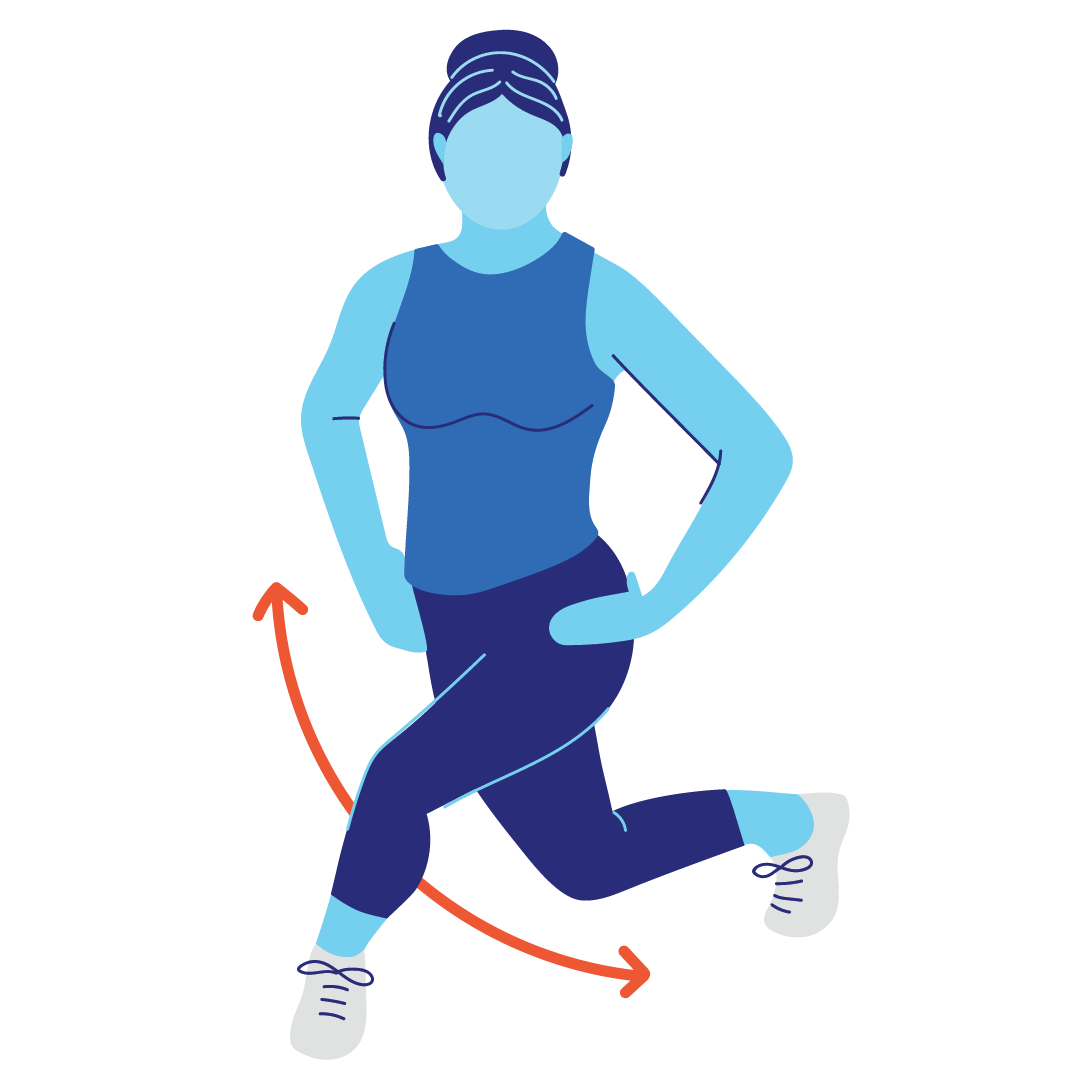 This lunge variation challenges your balance and works the outer area of your glutes, including the gluteus medius, Olson says.
This lunge variation challenges your balance and works the outer area of your glutes, including the gluteus medius, Olson says.
How to do it: Stand with your feet hips-width apart, hands on hips. With your right leg, take a large step diagonally backward behind your left. Keeping your core tight and shoulders above your hips, bend both knees until your rear knee hovers just above the ground. Push through the front heel as you extend both knees and bring your right leg back to its starting position. Do two to three sets of eight to 10 lunges on each leg.
7. Chair squat
 Whether you’re looking to improve your athletic ability, reduce your risk of injury, or maintain mobility as you age, squats are a critical exercise. Using a chair to guide the movement can activate the hips and help beginners progress to air squats, according to Gilles.
Whether you’re looking to improve your athletic ability, reduce your risk of injury, or maintain mobility as you age, squats are a critical exercise. Using a chair to guide the movement can activate the hips and help beginners progress to air squats, according to Gilles.
How to do it: Stand in front of the chair as though you’re about to sit down, feet hips-width apart. Keep tummy tight as you bend your knees, keeping them behind the toes. Just before your butt graces the seat, engage your butt and thighs to return to standing. Do this for two sets,10 to 15 reps per set.
Once you feel strong and comfortable in this first variation, Gilles recommends using the chair to perform a slightly deeper squat: Using a chair that is substantial enough to support your weight, stand behind it with both hands on the back for balance as you lower into the squat position described above.
8. Wall squat
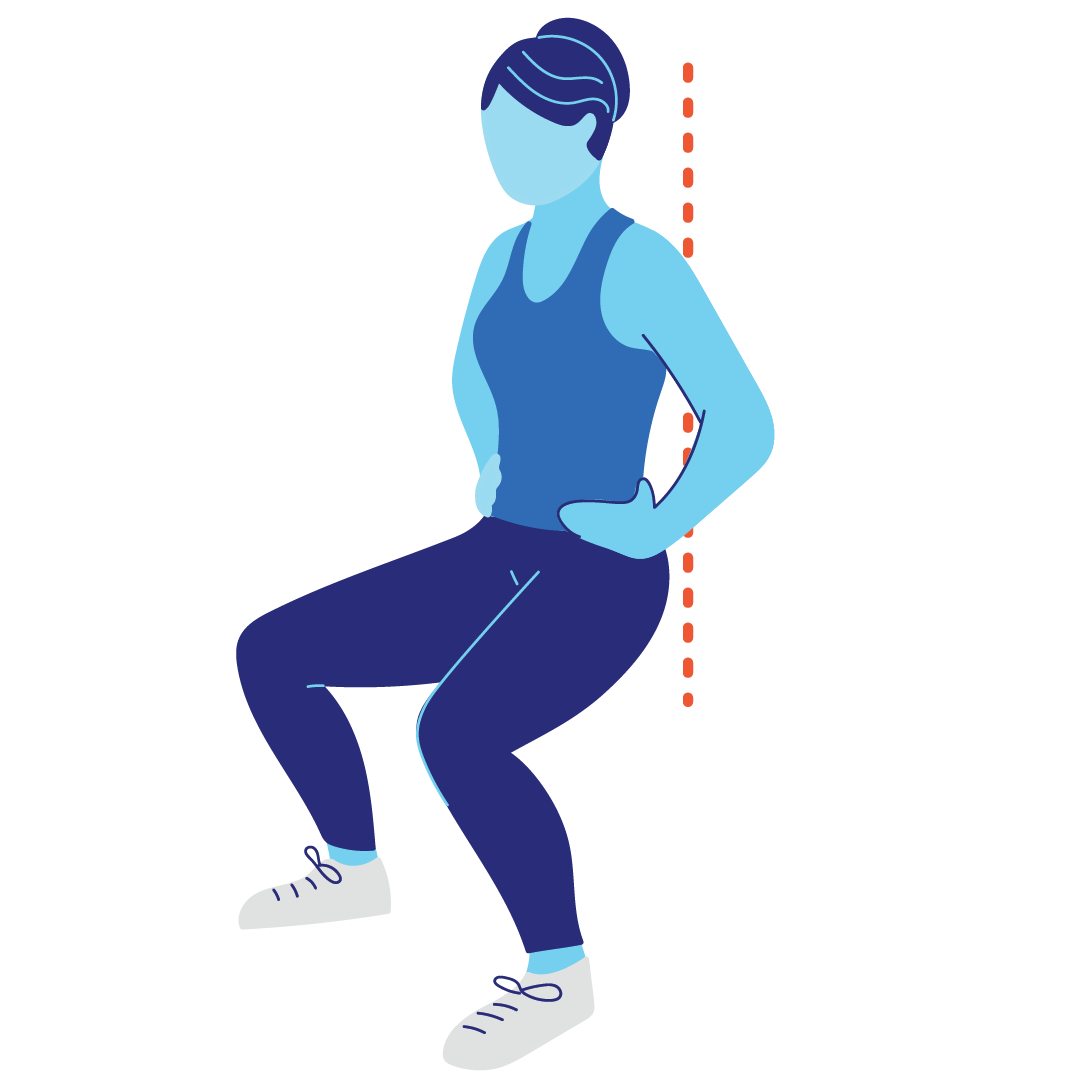 If you’re still working on proper squat form, wall squats are a safe way for beginners to practice. Incorporating wall squats into your routine may also benefit your posture, according to a small 2015 study published in the Journal of Physical Therapy Science.
If you’re still working on proper squat form, wall squats are a safe way for beginners to practice. Incorporating wall squats into your routine may also benefit your posture, according to a small 2015 study published in the Journal of Physical Therapy Science.
How to do it: Stand with your back leaning against a wall, feet hips-width apart. Keeping your knees above your ankles, slowly shuffle your feet forward as you bend your knees until your thighs are parallel to the floor. Keep the abdominal muscles tight and your spine pressed against the wall. Hold the position for 20 to 60 seconds, then reverse the initial movement to return to your starting position. Repeat up to five times, resting briefly between reps.
9. Standing leg circle
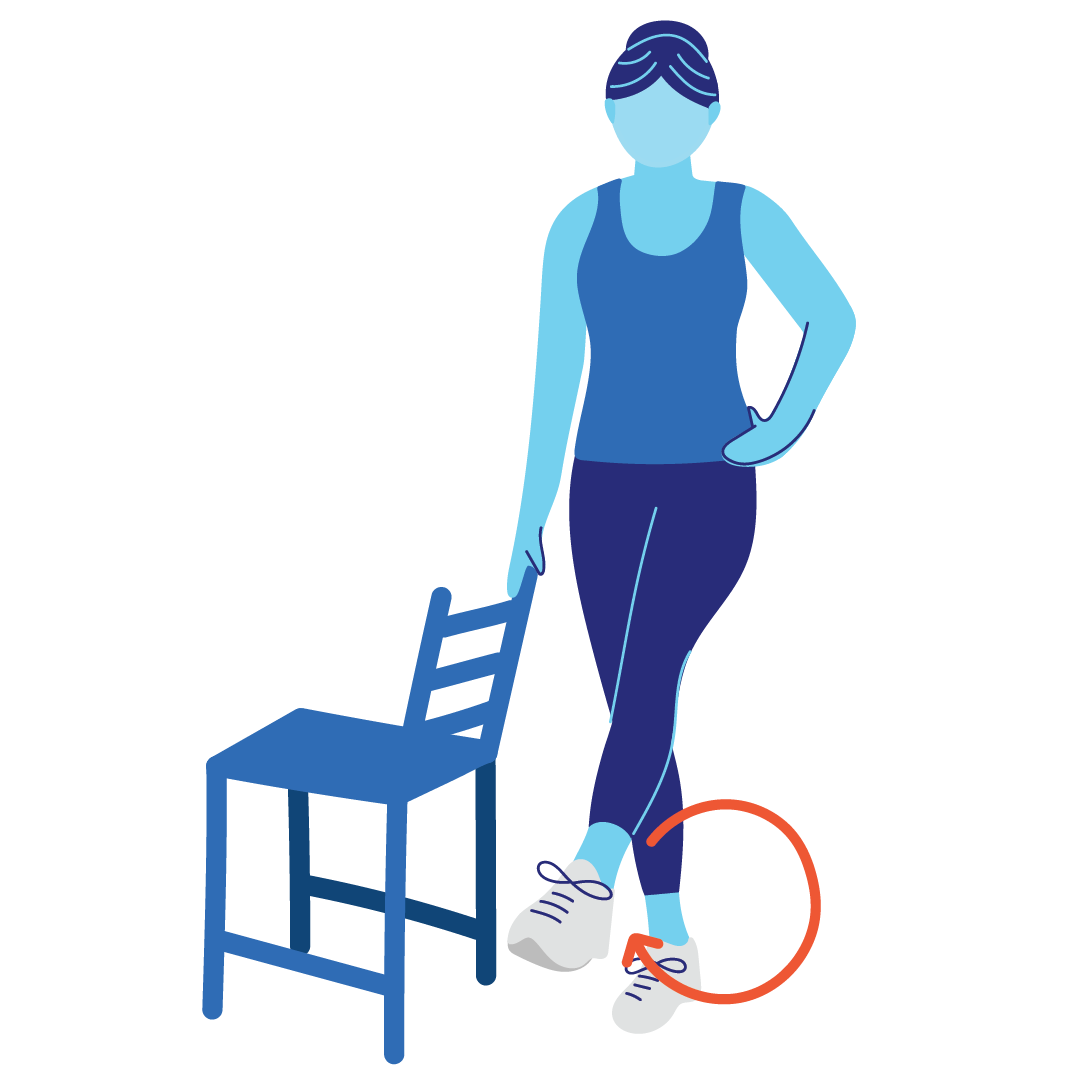 This simple exercise promotes balance and hip flexiblity, Gilles says. While it isn’t necessary, if you happen to stock your home gym with a small looped resistance band, positioning it around your knees throughout the movement can help with “full gluteal contractions” (i.e: squeezing and releasing), he adds.
This simple exercise promotes balance and hip flexiblity, Gilles says. While it isn’t necessary, if you happen to stock your home gym with a small looped resistance band, positioning it around your knees throughout the movement can help with “full gluteal contractions” (i.e: squeezing and releasing), he adds.
How to do it: Stand with your feet hips-width apart, hands on hips. (Optional: Lean on a wall or char for balance and support.) Keeping your shoulders above your hips, engage your abdominal muscles as you lift your right leg to the side about four to six inches off the ground. Keeping the toes pointed, draw a clockwise circle with your leg. Repeat eight times, then switch directions and repeat. Perform two to four sets on each leg.
10. Walking lunge
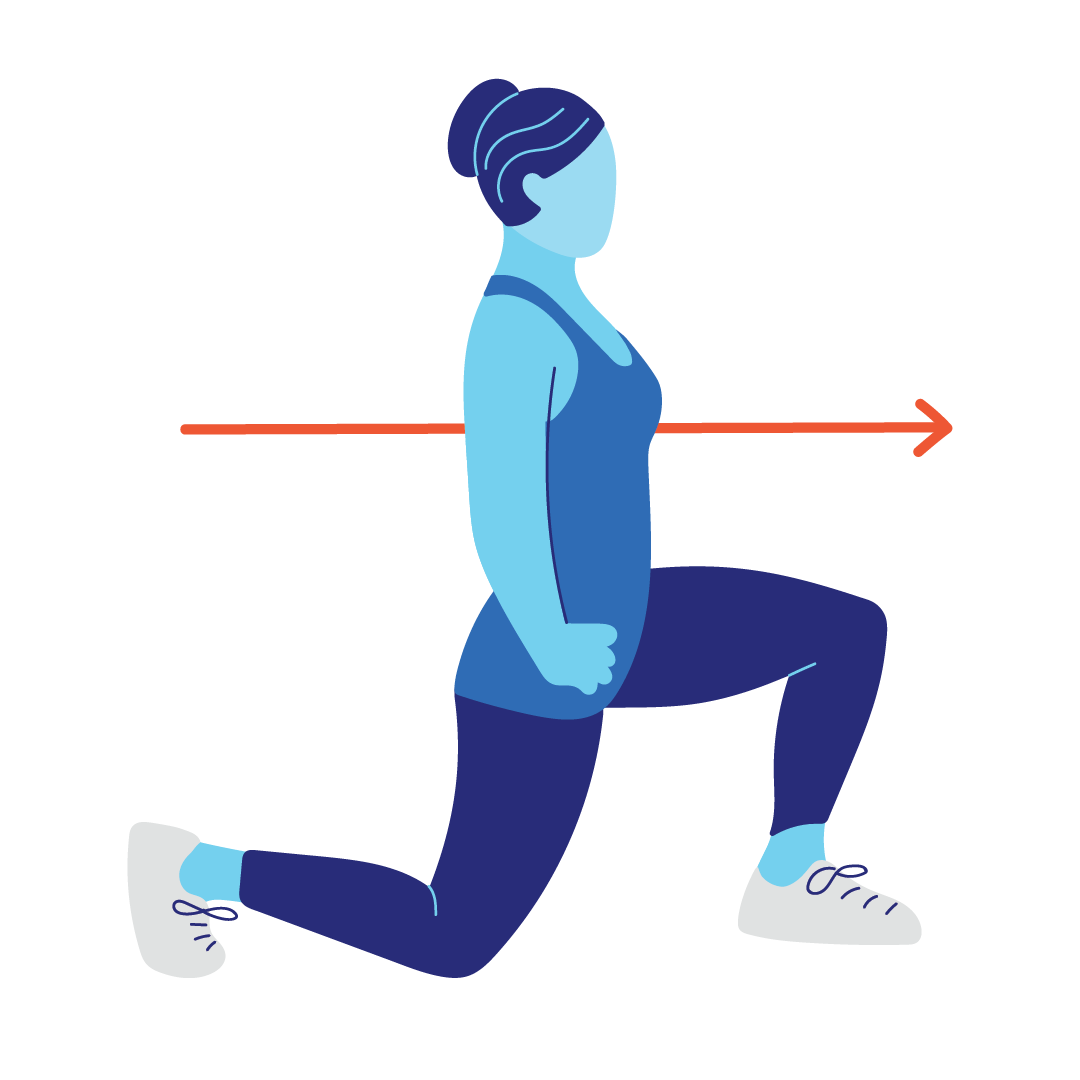 Walking lunges not only target your glutes and hamstrings, they’re another great exercise for improving your balance, Gilles says.
Walking lunges not only target your glutes and hamstrings, they’re another great exercise for improving your balance, Gilles says.
How to do it: Stand with your feet hips-width apart and hands on your hips (or one hand on the back of a sturdy chair for beginners). Keeping your shoulders stacked over your hips and front knee behind your front toes, take a large step forward with your right leg, then bend both knees until your left knee nearly touches the floor. Pause for a second, then push through your right heel as you extend both legs and take a large step forward with your left foot, lower into a lunge, and continue. Perform two to four sets of 10 to 20 reps on each leg.
Tip: Varying the length of your steps can affect which muscles are activated: Shorter steps will target the quads, while longer steps will target your glutes.
5 butt workouts outside the home
When you’re ready to get out and work those glutes, these activities can activate your butt, legs, and upper body—all without heavy weight lifting at the gym:
1. Swimming in the pool
“Swimming utilizes a diverse and extensive selection of muscles in the body, including the gluteal muscles,” says Krista A. Schultz, MEd, CSCS and exercise physiologist. Paying attention to your glutes by squeezing them while you swim can help increase the booty benefits, as can using a kickboard, or flippers while swimming freestyle, she continues.
2. Sled pulls and pushes
A sled you see at the gym isn’t the same type of sled you’d use to cruise down a snowy hill: It’s an object designed to carry weight and slide across a surface when pushed or pulled. The benefits of pulling and pushing a sled include strengthening the glutes, hamstrings, and abdominals, as well as overall conditioning, Gilles says.
3. Running uphill
While running at any incline can benefit your overall health, running uphill calls for greater hip extension, activating the gluteus maximus and hamstrings, Olson says.
4. Cycling
Cycling engages lower body muscles, including your hamstrings, quads, calves, and core, Gilles says. If you want to intensify the booty burn, Olson recommends holding onto the handle bars of your bicycle or stationary bike and standing up while you peddle—just imagine you’re building momentum to get uphill. Note: You may need to amp up the resistance or shift into a higher gear to maintain control in this position.
5. Rock climbing
If you’re looking to work more muscles than you ever knew you had (including those glutes!), give indoor (or outdoor) rock climbing a try: You’ll work your back (rhomboids, traps, and lats), arms (fingers, forearms, triceps and biceps), shoulders, legs, and butt, Gilles says, noting that you’ll use your glutes every time you step up.
Is a “big butt” better?
Although full butts may be a popular aesthetic, what’s more important than size is functionality: how well your glute muscles serve you while you’re performing daily activities like walking up steps and standing after sitting at your desk for hours, Gilles says.
What’s more, because the glute muscles aid in spinal support, a strong butt decreases the chances that you’ll deal with lower back pain and poor posture, Schultz says.
The upshot: Which exercises will give you the best glutes?
While there are a myriad of butt-centric and full-body exercises that strengthen the glutes, paying attention to form and challenging yourself with repetitions of the home exercises above, or adding resistance (i.e., using a resistance band or weights) at the gym will get you the derriere you desire, Schultz says.
How do you know when you’ve challenged yourself enough? When your muscles feel fatigued or your form starts to take a hit, Peterson says.
Finding ways to enjoy the process will make reaching your goal far more rewarding, Peterson continues. A few ways to sprinkle in some fun: Hire a trainer, ask some friends to join you during home workouts or at the gym, and vary your workouts.
--
Jessica DiGiacinto is an associate editor at WeightWatchers®. A health and wellness writer and editor based out of New York, she’s contributed to Popsugar, Bulletproof 360, and Galvanized Media, among other media outlets.
--
This article was reviewed for accuracy in June 2021 by Tiffany Bullard, PhD, manager for clinical research at WW. The WW Science Team is a dedicated group of experts who ensure all our solutions are rooted in the best possible research.
